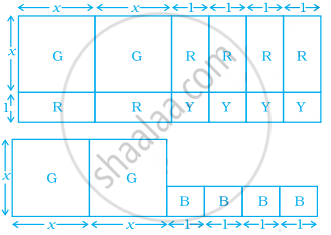Advertisements
Advertisements
प्रश्न
The difference of the squares of two consecutive numbers is their sum.
विकल्प
True
False
उत्तर
This statement is True.
Explanation:
Let two consecutive numbers be x and (x + 1).
Then squares of these numbers are x2 and (x + 1)2.
Difference of squares of these consecutive numbers = (x + 1)2 – x2
= x2 + 1 + 2x – x2 ...[∵ (a + b)2 = a2 + b2 + 2ab)
= 2x + 1
= x + x + 1
= (x) + (x + 1)
= Sum of the two consecutive numbers x and x + 1
Thus, difference of squares of two consecutive numbers = sum of the same consecutive numbers.
APPEARS IN
संबंधित प्रश्न
Use a suitable identity to get the following products.
(1.1m − 0.4) (1.1 m + 0.4)
Using a2 − b2 = (a + b) (a − b), find 12.12 − 7.92
Use the formula to find the value.
54 × 46
Expand: (51)2
Expand (3m + 5)2
Factorise the following, using the identity a2 + 2ab + b2 = (a + b)2.
4x2 + 4x + 1
Factorise the following, using the identity a2 + 2ab + b2 = (a + b)2.
`9x^2 + 2xy + y^2/9`
Factorise the following.
18 + 11x + x2
What should be added to 4c(– a + b + c) to obtain 3a(a + b + c) – 2b(a – b + c)?
Take suitable number of cards given in the adjoining diagram [G(x × x) representing x2, R(x × 1) representing x and Y(1 × 1) representing 1] to factorise the following expressions, by arranging the cards in the form of rectangles:
- 2x2 + 6x + 4
- x2 + 4x + 4.
Factorise 2x2 + 6x + 4 by using the figure.

Calculate the area of figure.
